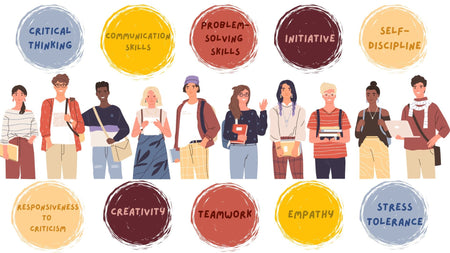Thank You, Teachers!
Teachers,
We wanted to take a moment in this season of gratitude and reflection to focus exclusively on being grateful for and reflecting on you, and we want to thank you for your continued dedication to what can so often feel like a thankless job. Although you deserve more than gratitude, we want you to know that we see you, we hear you, we believe in you, and we advocate for you.
In many ways, today’s classrooms bear little resemblance to their predecessors from even a decade ago, and the nature of teaching has changed as a result. Be it due to the pandemic, generational or societal factors, or a combination of those plus other contributing elements, the fact of the matter is irrefutable—teaching is different now. Thank you for hanging in there.
Between increasing class sizes, the push to embrace trending buzzword concepts, conference periods being eaten up by additional asks, and increasingly challenging student needs—it can feel like the job is becoming less possible by the day. For whatever reasons that compel each of you, you are choosing to remain in the classroom and shoulder the expectations and demands put upon you from so many directions, and for that we thank you.
Unfortunately, the innumerable positives unique to teaching often get overshadowed by all the “other stuff.” Being intentional about noticing or seeking out the bright spots that exist in the world of teaching is a must, because they are very much still there and as bright as ever. There is nothing quite like a class of students united by laughter at a funny noise or an innocuous joke. There is nothing quite like finally connecting with a student whose defensive walls have begun to crumble as a result of your hard work chipping away at them. There is nothing quite like the camaraderie that exists between teachers, especially now.
Schools have always been special places that exist within and yet somehow sit adjacent to the rest of our society, and that dynamic has not changed. Some days are easier than others, and some students, colleagues, and moments can make all the “other stuff” seem less pressing—but the core of your teaching experience is you. It’s whatever is in you that makes you right for this job at this time in your life and in the world around you.
All too often, teachers are urged to “remember your why,” so much so that it's typically and understandably met with eye rolls; however, despite the fact that it does not solve many of the very real problems teachers face, it certainly cannot hurt to reflect on your reasons for having become—and still being—a teacher. Even though it is certainly overused, there is still a great deal of truth to the importance of focusing on your why. There are many factors beyond your control in this job, but focusing on why you are here can help you to focus on the things you can control. After all, your why is unique to you. Why are you a teacher? Why do you teach what you teach? Why do you teach it the way you do?
Something in you was attracted to this monumental job, and if it was the allure of summer and holiday breaks (or “breaks”), well, that probably hasn’t been a very sustainable attraction. Do you teach because you want to inspire the love of your content area in others? Do you teach because you want to prepare the future generations with the knowledge you feel as though you missed out on? Do you teach because you want to be a safe space for the kind of kid you were when you could have used a safe space? Do you teach because you loved school and want to play your part in making school something your students love, too?
Regardless of your why—or because of it—you’re here. You’re teaching, and we thank you. We thank you for showing up, day after day, even on the days when you don’t want to. We thank you for planning lessons, even on the days when you doubt how successful they’ll be. We thank you for being there for your students, even on the days when some of them make it hard on you. We thank you for representing the pursuit of growth, even when it isn’t linear, and of lifelong learning. We thank you for holding this integral position in our society even when society doesn’t always show its thanks enough or in the right ways. We thank you for continuing to walk this walk. We thank you for being a teacher.
Now more than ever, we thank you.
















